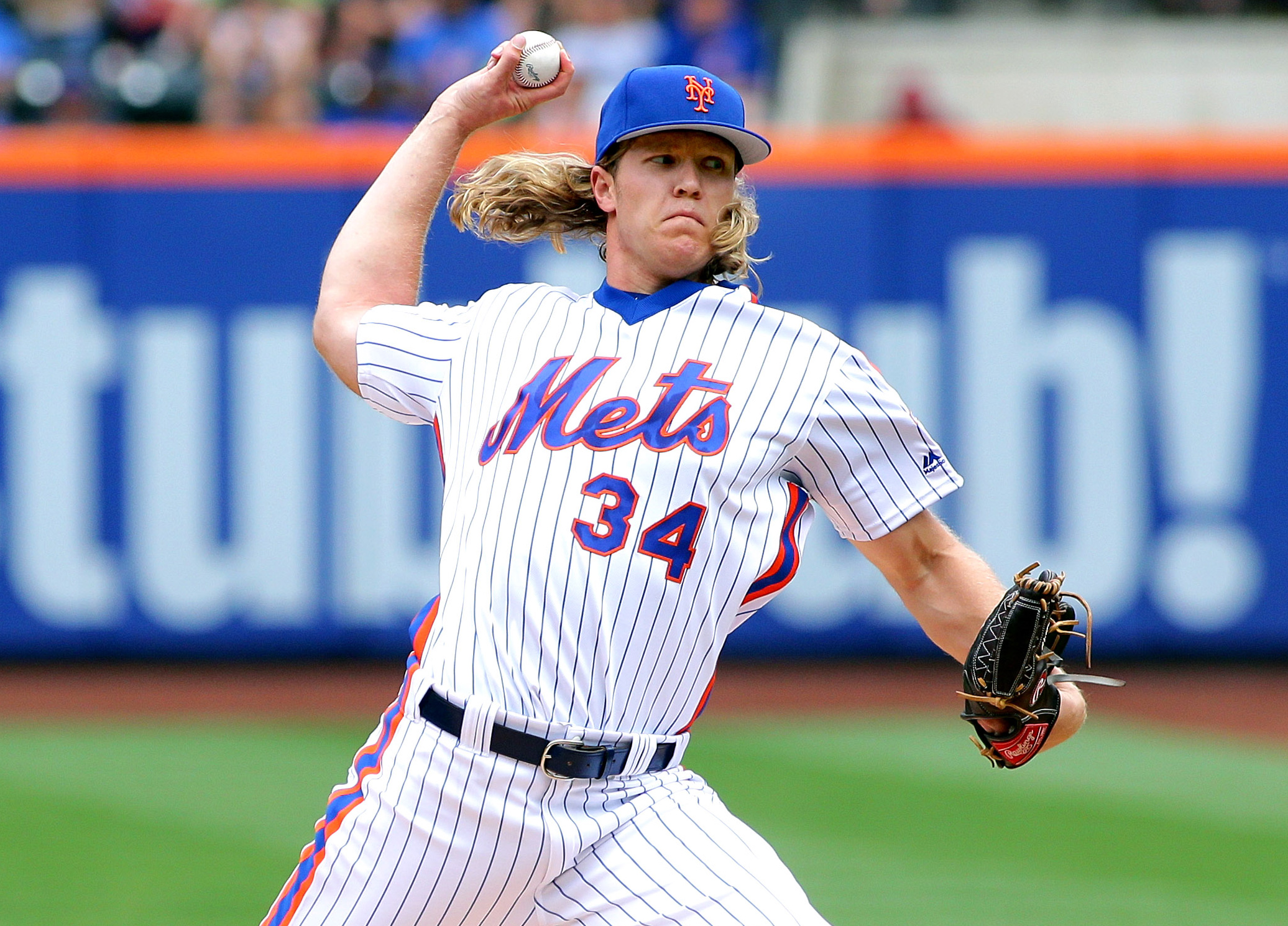Before this season started, I took a dive into the adjustments Noah Syndergaard had made during the 2015 season that caused him to graduate from being a top, but flawed prospect into a borderline ace as a rookie. 16 starts and a relief appearance later, we can basically can the borderline—like Jacob deGrom, Noah Syndergaard is an absolute, no-questions-asked ace. On the occasion of Syndergaard’s first All-Star Game selection, and with the potential for Syndergaard to start said game, I thought this would be an appropriate time to check back in on “Thor.”
Syndergaard enters Friday’s start against Washington—and rival All-Star starting candidate Stephen Strasburg—with a 9-3 record and 2.41 ERA over 101 innings, 123 strikeouts to only 15 walks. In more advanced metrics, he carries a 2.63 DRA (Deserved Run Average) and 3.29 PWARP (Pitcher Wins Above Replacement). In the NL, he’s 4th in ERA, behind Clayton Kershaw, Madison Bumgarner, and Jake Arrieta; 3rd in DRA behind Jose Fernandez and Kershaw; and 5th in PWARP behind Kershaw, Fernandez, Bumgarner, and Julio Teheran.
What’s Syndergaard been doing differently this year? That slider I talked about in March has become by far his most frequently used secondary offering, thrown 21.36 percent of the time per Brooks Baseball, about exactly as often as Syndergaard threw his curve in 2015. Somehow, he’s still inducing nearly as many whiffs with the slider as he did in 2015’s smaller sample. Now that he commands it well, and is throwing it consistently in the low-90s and touching 95 with it, Syndergaard’s slider might be the single best pitch in baseball at this point. He’s also improved the quality and command of his changeup rather substantially, and his average velocity has crept up another tick or two across the board. His curveball, still a quality pitch, is now relegated to the back of the dance card.
You still can’t plausibly call Syndergaard the best pitcher in the league, either in 2016 or in general, because Clayton Kershaw still looms. Kershaw has turned in a year just as good as any he’s ever had, having reigned as the best pitcher in baseball continuously since 2011. But he won’t start the All-Star Game, because he’s currently on the disabled list with a bad back, and even though he’s ahead of schedule, his return will still come on the other side of the break. Nor will Bumgarner, scheduled to pitch for the Giants on Sunday and thus likely ineligible to pitch. So it should be Syndergaard, right? A big emerging star under the bright lights, probably the best pitcher available, his own manager in Terry Collins managing. It all reminds you of Matt Harvey in 2013, no? Well, Harvey was something of the hometown choice in that game, and the All-Star Game is in San Diego this year.
Stephen Strasburg was born in San Diego. He grew up in the San Diego suburbs. When he was famously the best college pitcher of all-time, it was for San Diego State, managed by San Diego Padres legend Tony Gwynn. He lives in San Diego in the offseason. Strasburg hasn’t been quite as good as Syndergaard, but he hasn’t been much worse—2.71 ERA, 2.85 DRA, 2.99 PWARP—and if you’re an aficionado of win/loss records, Strasburg is an untouched 11-0.
National League manager Terry Collins played his All-Star selections pretty close to straight-up, choosing not to take sentimental favorite Bartolo Colon off his own team in favor of Cubs starter Jon Lester and Marlins closer A.J. Ramos. Indeed, Collins has yet to select a single Met—Syndergaard, Jeurys Familia, and Yoenis Cespedes were all voted onto the team by the players or fans before Collins got to make his optional managerial selections. Will he choose his own ace, perhaps the best starter left to his disposal? Will he choose the narrative favorite that pitches for his main rival? Will he opt for another direction entirely, like Fernandez or Johnny Cueto? Only time will tell, but it’s been quite a ride for Syndergaard to even be mentioned in this conversation.
Photo Credit: Andy Marlin-USA TODAY Sports
